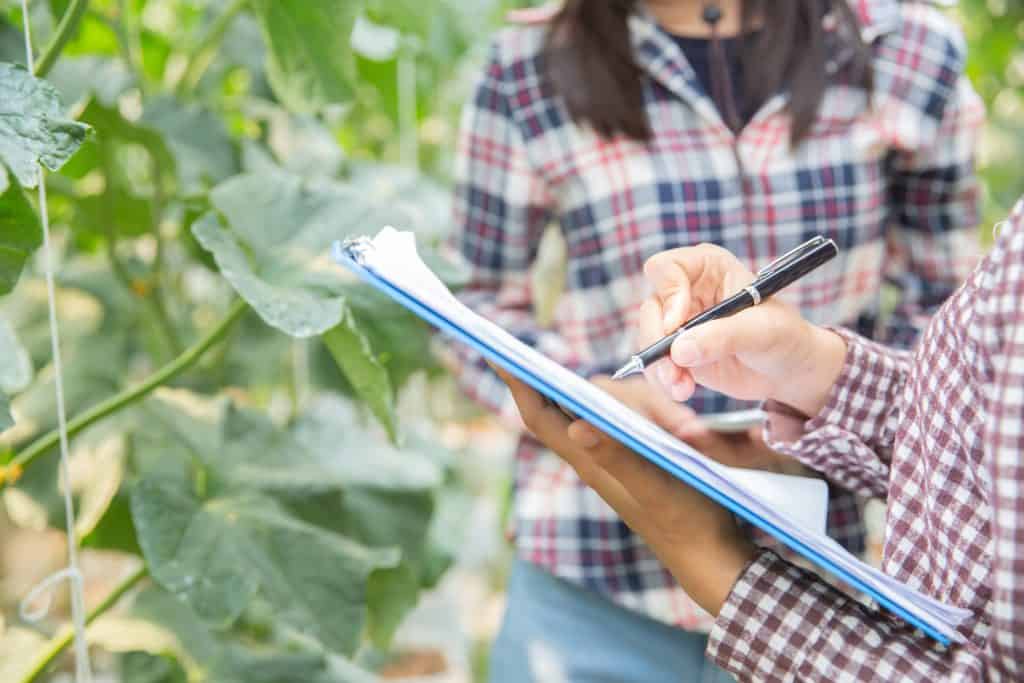Agricultural activity is the management of biological transformation and harvesting assets by entities for sale or to be converted into agricultural products or into additional biological assets. PSAK 69: Agriculture provides accounting arrangements which include the recognition, measurement, and disclosure of agricultural activities. The biological transformation referred to in PSAK 69 is a process of growth, degeneration, production, and procreation that result in qualitative or quantitative changes in biological assets.
Table of Contents
PSAK 69 stipulates that biological assets or agricultural products are recognized when they meet several of the same criteria as the criteria for asset recognition. PSAK 69 is applied to record matters related to agricultural activities, including: biological assets, except productive plants (bearer plants), agricultural products at the point of harvest, and government grants related to agricultural activities.

Those biological assets are measured on initial recognition and at the end of each financial reporting period at fair value less costs to sell. Gains or losses arising from changes in the fair value of assets are recognized in the profit or loss in the period in which they occur.
Scope and Exceptions of Biological Assets in Agricultural Accounting: PSAK 69
The biological assets in PSAK 69 are live animals or plants, including products that grow on productive plants. A productive plant (bearer plants) is a living plant that is used in the production or supply of agricultural products, it is expected to produce products for a period of more than one period and has a very rare possibility of being sold as an agricultural product, except for the sale of incidental scrap.
Exceptions are granted when it is clear that the fair value cannot be measured reliably. PSAK 69 provides an exception for productive assets that are excluded from the scope of this statement. The arrangements for accounting for earning assets refer to PSAK 16: Fixed Assets.
Exceptional Provisions and Scope of PSAK 69 in Agricultural Accounting
PSAK 69 provides for the accounting arrangements for unconditional government grants related to biological assets to be measured at fair value less costs to sell and recognized in profit or loss when and only when, the government grant becomes a receivable.
PSAK 69 does not regulate the processing of agricultural products after harvest, for example the processing of grapes into wine and wool into yarn. PSAK 69 cannot to be applied to things including: land related to agricultural, productive plants, government grants related to productive crops and intagible assets related to agricultural activities.
PSAK 69 is effective for the financial year period beginning on, or after, January 1, 2018 and recorded in accordance with PSAK 25: Accounting Policies, Changes in Accounting Estimates and Errors.
Cost Measurement and Treatment of Immature Acquired Productive Crops in Agricultural Accounting
The cost of acquiring productive crops should be recognized as an asset if and only if it is most likely that the entity will derive future economic benefits from the asset and the cost of acquiring the asset can be reliably measured.
The Determination of the Cost of Acquisition
Immature acquired productive crops (those not ready to produce) are measured by accumulated costs, such as cost capitalization treatment for self-constructed fixed assets, until they are ready for used. The determination of the cost of acquisition is carried out as follows:
- Any internal profit eliminated.
- The wasted that occurs in the use of raw materials, labor, or the resources in the process of biological transformation until it is ready to produce excludes the cost of acquiring assets.
- Interest costs can be recognized as a component of the cost of acquiring fixed assets according to PSAK 26: Borrowing Cost.
Government grants related to productive crops refer to PSAK 61, namely deferred income or deduction of the carrying amount of assets.
Biological assets in the form of non-bearer plant include cultivated plants to be harvested as agricultural products, crops cultivated to produce agricultural products, and entities will also harvest and sell the crops as agricultural products, in addition to selling incidental residues and annual plants (annual corps).
Diverse Categories of Animals as Biological Assets
Animals that are included in the biological assets of agricultural activity, among others:
- Animals cultivated for harvesting as agricultural products;
- Animals cultivated to produce agricultural products and entities will also harvest and sell the animals as agricultural products; and
- Animals to produce additional animals.
Recognition Criteria for Biological Assets and Agricultural Products
Entities recognize biological assets or agricultural products when:
- The entity controls biological assets as a result of past events;
- It is likely that the future economic benefits associated with such biological assets will flow to the entity; and
- The fair value or cost of acquiring biological assets can be reliably measured.
Measurement of Biological Assets and Agricultural Products
The initial measurement of a biological asset is as much as its fair value minus the cost to sell. However, if fair value cannot be reliably measured, biological assets are measured at the cost of acquisition.
Meanwhile, the measurement at the end of the period is as much as the fair value minus the cost to sell (unless the fair value cannot be reliably estimated). However, if fair value cannot be reliably measured, biological assets are measured at the cost of acquisition minus accumulated depreciation and accumulated impairment losses.
Profit are losses arising at the time of initial recognition of biological assets at fair value minus the cost of selling are included in the profit and loss in the period of occurrence. Changes in fair value minus the cost of selling biological assets are subsequently included in the profit and loss in the period of ocurrence.
Measurements of agricultural products harvested from biological assets are measured at fair value minus the cost of selling at the point of harvest. Such a measurement is the cost of acquisition on the date when applying PSAK 14: Inventory or other applicable PSAK.
The profit or loss incurred at the time of the initial recognition of the agricultural product at a fair value minus the cost selling is included in the profit and loss in the period in which the profit or loss ocurred.
Government Grants and Agricultural Accounting
Unconditional government grants related to biological assets measured at fair value minus the cost of selling are recognized in profit and loss when and only when, such government grants become receivables.
If a government grant related to a biological asset measured at fair value minus the cost to sell is conditional, including when a government grant requires the entity not to engage in a particular agricultural activity, then the entity recognizes the government grant in profit and loss when and only when the conditions inherent in that government grant have been met.
Reconciliation of Changes in Carrying Amount
The profit or loss arising during the period is the initial recognition of biological assets and agricultural products, as well as from changes in fair value minus the cost of selling biological assets. The entity shall describe each group of its biological assets in its Financial Statement. If it is not disclosed in the information published with the Financial Statement, then the entity describes the nature of its activities involving each group of biological assets as well as the size or non-financial estimate of the specific quantity of each group of biological assets belonging to the entity at the end of the period and the output of agricultural products during the period.
Other Disclosures in Agricultural Accounting
In addition, the entity also discloses the existence and carrying amount of biological assets for which ownership is limited and the carrying amount of biological assets pledged for liabilities. The amount of commitment to the development or acquistion of biological assets and financial risk management strategies related to agricultural activities. The entity also prepares a reconciliation of changes in the carrying amount of biological assets between the beginning and end of the current period.
Looking for expert assistance in Agricultural Accounting? Look no further than SW Indonesia, a trusted partner in providing comprehensive financial solutions for agricultural businesses. Our team of experienced professionals understands the unique challenges and requirements of the agricultural industry. Whether you need guidance in implementing PSAK 69, optimizing financial reporting, or improving cost analysis, we have the expertise to support your needs. Contact us today at +62 2993 2132 or visit our website sw-indonesia.com to learn more about how we can help you navigate the realm of Agricultural Accounting and drive your business towards financial success.













